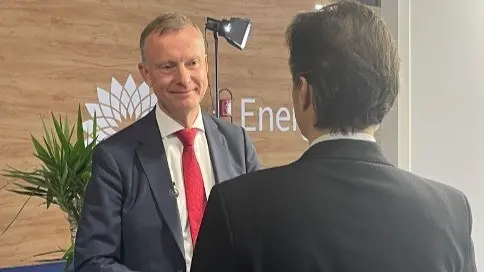Hydrogen, SAF, and Collaboration: Takeaways from Gastech 2025

Gastech 2025 was earlier this month, with more than 50,000 attendees and 1,000 exhibitors, the event was a true showcase of the global energy sector. What struck me most was the scale of the conversations – not just about today’s energy challenges, but about how we accelerate the transition to a lower-carbon future.
Hydrogen has long been hailed as a cornerstone of the energy transition, but the focus in Milan was on how to deliver it reliably and at scale. Johnson Matthey is tackling this challenge through technologies like LCH™ technology, which produces low-carbon hydrogen while capturing up to 99% of CO₂ emissions. Already in use in projects such as HyNet in the UK, LCH offers performance guarantees that reduce risk for customers.
Alongside this sits ADEPT™ ammonia cracking technology, which solves the logistics problem of hydrogen transport. It allows hydrogen to be shipped as ammonia from resource-rich regions and then re-extracted at its destination for use in industry, transport, or power generation.
As Maurits van Tol, Johnson Matthey’s Chief Executive of Catalyst Technologies, said at the event: “Big is beautiful in our industry. The larger the plant, the lower the costs. With the right technologies, the right partners, and the right policies, hydrogen can deliver the scale and reliability the world needs.”
Decarbonising Aviation with SAF
Aviation remains one of the hardest sectors to decarbonise. SAF currently accounts for less than 0.2% of global jet fuel, despite being a proven technology with potential emissions reductions of up to 80%.
Maurits van Tol was clear: this industry must move from projects on paper to plants in operation. His call for a “design once, build many times” approach captured the urgency of scaling up. Standardisation and replication are critical to making SAF affordable.
Momentum is building. In Texas, USA BioEnergy is developing a facility that will use Johnson Matthey and Honeywell technologies to convert one million tonnes of forest thinnings into 65 million gallons of transport fuels annually by 2030. Repsol has a SAF plant due online in Spain in 2026, while DG Fuels is progressing projects in North America.
To accelerate this growth, Johnson Matthey has joined with Honeywell, GIDARA Energy, and Samsung E&A to form the SAF Technology Alliance, providing end-to-end solutions that cut project timelines and reduce capital costs.
But technology alone isn’t enough. Policies and incentives are needed to bridge the gap between fossil kerosene and SAF. In Europe, subsidies and emissions trading allowances are starting to make a difference, yet affordability remains central. As van Tol reminded us: “We all need to invest a little bit of our money in making sure that flying into the future remains affordable to all.”
RINA’s Perspective
For RINA, the focus was on its role as a trusted engineering partner to the energy sector. Their work across hydrogen, renewables, and maritime decarbonisation positions them as a bridge between ambition and delivery.
By ensuring compliance, safety, and risk management, RINA helps turn innovative technologies into bankable, certifiable projects that can attract the investment required for large-scale deployment. Their message in Milan was clear: technical capability, regulation, and financing must all align if the transition is to succeed.
Collaboration as the Common Thread
From both Johnson Matthey and RINA, a consistent theme emerged: no single organisation can deliver net zero alone. Collaboration is the lever that reduces risk, speeds up deployment, and brings costs down.
Whether it’s partnerships on hydrogen production and transport, alliances to scale SAF, or engineering expertise to certify new infrastructure, the future will be built through shared responsibility and collective effort.
Looking Ahead
Gastech 2025 showed just how much progress has been made – but also how much lies ahead. Hydrogen and SAF are no longer theoretical. They are real, scalable solutions that now need to move faster from concept to operation.
For me, the event underscored that the energy transition will not be driven by isolated breakthroughs. It will be driven by our ability to standardise, replicate, and collaborate across borders and sectors.